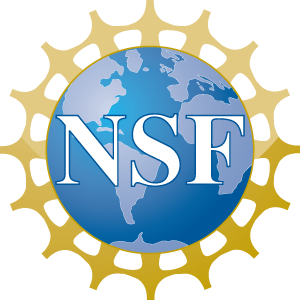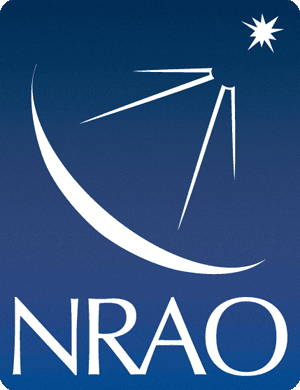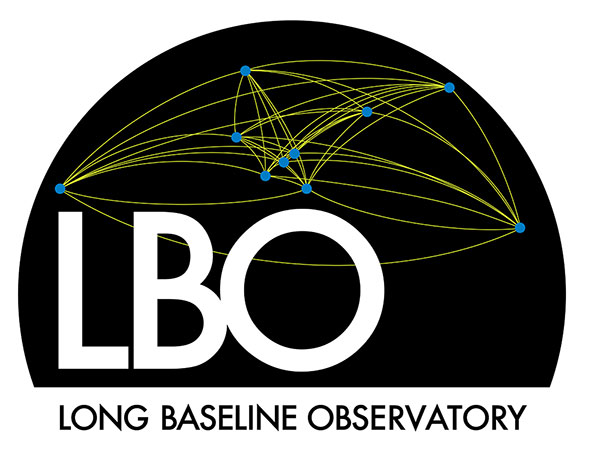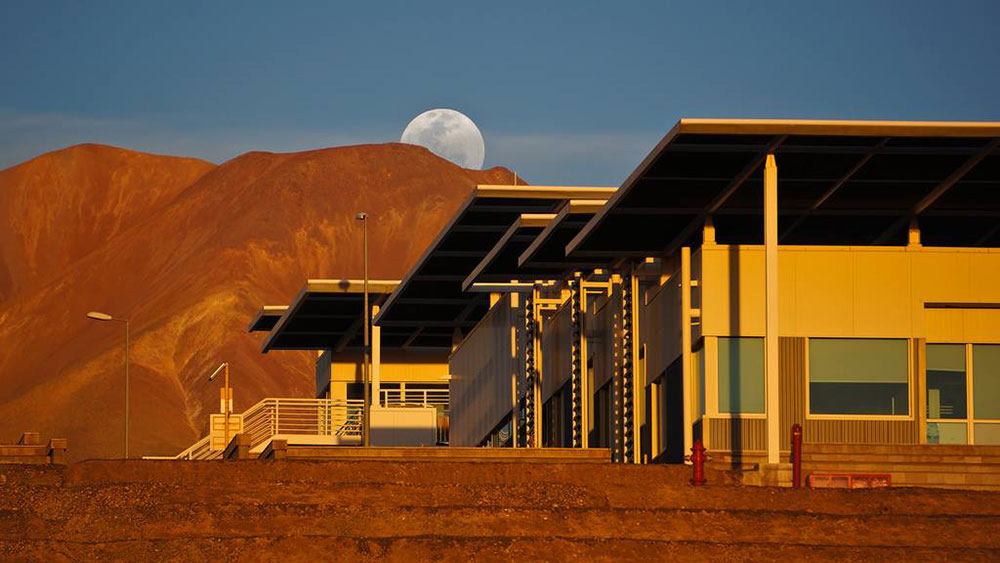NRAO eNews
Volume 10, Issue 10
1 December 2017
NRAO eNews
Volume 10, Issue 10 • 1 December 2017

Upcoming Events

NRAO Town Hall at the Jan 2018 AAS Meeting
Jan 11, 2018 | National Harbor, MD

The Very Large Array Today and Tomorrow: First Molecules to Life on Exoplanets
Jan 11, 2018 | National Harbor, MD

Magnetic Fields or Turbulence: Which is the critical factor for the formation of stars and planetary disks?
Feb 6 - 9, 2018 | National Tsing Hua University, Hsinchu, Taiwan

Astrophysical Frontiers in the Next Decade and Beyond
Jun 26 - 29, 2018 | Portland, OR
NSF RFI: Mid-scale Research Infrastructure

On 6 October 2017, the National Science Foundation (NSF) released a broad Request for Information (RFI) to the U.S. science and engineering community, seeking input on existing and future needs for mid-scale research infrastructure. The NSF typically defines “mid-scale” as research infrastructure requiring resources between the $4M upper bound of the Major Research Instrumentation (MRI) program and the $100M lower bound of the Major Research Equipment and Facilities Construction (MREFC) program; this first RFI focuses on mid-scale infrastructure between $20M and $100M. The NSF is actively considering new approaches to funding science on this mid-scale resource scale, and is working to identify promising projects that remain difficult to initiate. Note, however, that there is no NSF commitment to launch a Call for Proposals or fund projects in this RFI. The NSF is, at this point, simply gathering data from the community.
The radio – millimeter – submillimeter (RMS) community has had substantial mid-scale NSF awards success in recent years, including the Event Horizon Telescope, the Hydrogen Epoch of Reionization Array, the North American Nanohertz Observatory for Gravitational Waves, a new polarization-sensitive receiver for the Atacama Cosmology Telescope, and more. Community members participating in the three RMS Futures conferences sponsored by the Kavli Foundation and Associated Universities, Inc. over the past two years have presented a range of exciting mid-scale research infrastructure opportunities, all demonstrating extraordinary scientific promise. This RFI provides a vehicle for community members to raise the NSF profile and awareness of their mid-scale RMS projects, and to actively participate in the definition of the resources required for this growing NSF priority.
Thus, I urge scientists engaged in research that could be substantially enhanced by additional NSF mid-scale infrastructure investment to review the RFI announcement and consider submitting a response that describes your mid-scale needs and interests. The effort required to complete an RFI entry is quite modest. Showcasing the many scientifically-compelling mid-scale RMS opportunities will undoubtedly help NSF understand the potential scientific impact of these opportunities, and may eventually lead to new resources.
Semester 2018A Proposal Outcomes

The NRAO has completed the Semester 2018A proposal review and time allocation process for the Very Large Array (VLA). A total of 259 new proposals were received for the 1 August 2017 submission deadline. The oversubscription rate (by proposal number) was 2.2 and the proposal pressure (hours requested over hours available) was 1.3 for the A configuration and 1.4 for the D configuration – consistent with the long-term averages. One large and 30 time critical (triggered) proposals were received. There was significant demand for the time made available on space observatories through inter-observatory agreements, and 26 proposals requesting time on the Hubble Space Telescope (HST), Swift, or Chandra X-ray Observatory (together with AUI/NRAO telescope time) were submitted.
The proposals were reviewed for scientific merit by eight Science Review Panels (SRPs) and for technical feasibility by NRAO staff. These reviews were completed in September – October 2017 and then considered by the Time Allocation Committee (TAC) at a face-to-face meeting on 24-25 October 2017 at the Green Bank Observatory in West Virginia. The TAC – comprising the eight SRP chairs – was charged with recommending a science program for Semester 2018A to the Observatory Director. The recommended program was reviewed and approved on 7 November 2017. (Proposals submitted to the GBO and LBO were assessed through the same process.)
A disposition letter was sent to the Principal Investigator and Co-Investigators of each proposal on 13 November 2017, and a TAC report containing information for proposers and observers, including statistics and telescope pressure plots, was released the same day. The approved science program for the VLA has been posted to the NRAO science website. The authors, title, abstract, and scheduled hours for each approved proposal can be accessed from the Proposal Finder Tool.
The Student Observing Support program continues to be available for NRAO observing programs and we encourage Principal Investigators of highly ranked VLA proposals to consider applying for support.
The NRAO welcomes community feedback on the proposal review and time allocation process. Please provide such feedback via the Proposal Review department of the NRAO Helpdesk.
Student Observing Support Awards
The NRAO Student Observing Support (SOS) Program supports research at U.S. colleges and universities by students working on approved Atacama Large Millimeter/submillimeter Array (ALMA) or Jansky Very Large Array (VLA) programs. The program currently supports about 12 students for each ALMA Cycle and about three for each VLA semester, providing up to $35,000 per award. The overall success rate of SOS proposals has been almost 50% in recent calls.
The SOS program is currently accepting applications for VLA projects from Semester 2018A, with a deadline of 15 December 2017. More information is available at the SOS website.
The SOS committee, an external panel, recently made the following awards for ALMA Cycle 5.
- Bandon Decker (Univ. Missouri-Kansas City; supervisor Mark Brodwin), ALMA Observations of the Most Massive Galaxy Clusters at z > 1
- Molly Gallagher (Ohio State Univ.; supervisor Adam Leroy), A Wide, Deep Dense Gas Map of M100 to Connect Extragalactic and Galactic Dense Gas Results
- Rachel Harrison (Univ. Illinois; supervisor Leslie Looney), Morphology of Polarization in T Tauri Stars: What the Flux?
- Sreevani Jarugula (Univ. Illinois; supervisor Joaquin Vieira), Resolving water emission in the early universe
- Andy Lam (Univ. Virginia; supervisor Zhi-Yun Li), BOPS: B-field Orion Protostellar Survey
- Jed McKinney (Univ. Massachusetts Amherst; supervisor Alexandra Pope), Science with ALMA and JWST: Tracing the Heating and Cooling in Star Forming Regions in Galaxies at Cosmic Noon
- Ismael Mireles (Wesleyan Univ.; supervisor Meredith Hughes), Measuring the Chemical Composition of Molecular Gas in the Debris Disk around 49 Ceti
- Nickalas Reynolds (Univ. Oklahoma; supervisor John Tobin), Are Close Binaries Formed Through Disk Fragmentation?
- Yohan Yea Seang (Univ. Delaware; supervisor Sarah Dodson-Robinson), eta Crucis campaign
- May Wang (Harvard-Smithsonian Center for Astrophysics; supervisor Qizhou Zhang), Are Magnetic Fields Dynamically Important in Massive Star Formation?
- A student at the Univ. Hawaii (supervisor Jonathan Williams), ALMA survey of lambda Orionis disks: understanding the influence of OB stars on planet formation
- A student at the Univ. Pittsburgh (supervisor Rachel Bezanson), How universal are surprisingly significant molecular gas reservoirs in massive post-starburst galaxies at z~0.6?
The Very Large Array Today and Tomorrow: First Molecules to Life on Exoplanets
Thursday, 11 January 2018 |
|
Poster Session 342 9:00 am – 6:30 pmPrince Georges Exhibit Hall |
Oral Session 321 2:00 – 3:30 pmPotomac D |
Gaylord National Resort & Convention Center |
|
The NRAO will convene a Special Session entitled The Very Large Array Today and Tomorrow: First Molecules to Life on Exoplanets on 11 January 2018 in National Harbor, Maryland, during the 231st Meeting of the American Astronomical Society (AAS).
The Very Large Array (VLA) has had a major impact on nearly every branch of astronomy, and the results of its research are abundant in the pages of scientific journals and textbooks. Five years after the completion of the Expanded Very Large Array Project, the VLA has strengthened its position as the most versatile, widely-used radio telescope in the world. Rededicated in 2012 as the Karl G. Jansky VLA, the array continues to make cutting-edge discoveries across a broad range of disciplines. This AAS Special Session will showcase that cutting-edge research. It will also address future transformative scientific opportunities that could be enabled by new capabilities that would ensure the instrument's pre-eminence well into the 21st century.
This Special Session will include invited oral presentations, and an associated poster session with contributed presentations. The confirmed oral presentations will include:
- Dominik Riechers (Cornell), The Cold Side of Galaxy Formation: Dense Gas Through Cosmic Time
- Brenda Matthews (NRC), Terrestrial Zone Exoplanets and Life
- Rachel Osten (STScI), The Bursting Universe: New Tools for Cosmology and Physics
- Mark McKinnon (NRAO), The Very Large Array: Pioneering New Directions in Radio Astronomy
- Mark Lacy (NRAO), The VLA Sky Survey
- Eric Murphy (NRAO), Radio Synergies with Current and Next-Generation Great Observatories
We look forward to seeing you at the January 2018 AAS!
Astrophysical Frontiers in the Next Decade and Beyond
26 – 29 June 2018
Portland, Oregon
http://go.nrao.edu/ngVLA18
New research facilities and the scientific vision outlined by New Worlds, New Horizons have motivated the exploration of vast new discovery space, and astrophysics has seen extraordinary progress in the past decade, opening new frontiers across many fields. Astronomers have acquired the first high-resolution images of planet formation in a Solar System analog, probed the physics of energetic star-forming galaxies into the epoch of reionization, directly detected gravitational radiation from merging black holes, and discovered enigmatic new transients, such as Fast Radio Bursts.
Sponsored by the National Radio Astronomy Observatory, this conference will bring together a substantial cross-section of the astronomical community 26 – 29 June 2018 in Portland, Oregon to discuss how to effectively address the highest priority astrophysical questions of our time. Plenary sessions will feature invited speakers, and three parallel sessions will address: (1) Exoplanet and Protoplanetary Disk Origins; (2) Galaxy Evolution Mechanisms; and (3) Black Holes & Transient Phenomena. Each session will canvas recent observational and theoretical progress, address key unanswered questions, and motivate future research directions in the context of next-generation facilities that would span the electromagnetic spectrum, including a Next Generation Very Large Array, the Large Synoptic Survey Telescope, 30m-class optical-infrared telescopes, the Advanced Laser Interferometer Gravitational-Wave Observatory, and the Square Kilometre Array – Phase 1.
SOC Co-chairs
| Brenda Matthews (NRC) | Cradle of Life |
| Caitlin Casey (UT) | Galaxy Evolution |
| Laura Chomiuk (MSU) | Black Holes and Transients |
Additional information, including pre-registration, is available at the conference website.
Hoping to see you in Portland in late June!
Second Round of ngVLA Community Studies Awards Announced
As part of the process of building towards a final concept for a next generation Very Large Array (ngVLA), NRAO recently launched the ngVLA Community Studies program, allowing members of the scientific and engineering communities to become major contributors to this effort. The initial call requested investigations on scientific objectives and technical challenges that play major roles in driving the telescope design where community input was expected to be most constructive. The first call yielded 26 approved scientific and technical studies. The results of these studies were presented at the June 2017 ngVLA science meeting, which yielded a community agreed upon baseline concept that is documented in ngVLA Memo #17.
Given the success of our first round of ngVLA Community Studies, a second round was initiated to tackle some of the most pressing questions unveiled by the initial studies. The primary objective for the second round of community studies is to further develop the Key Science Goals outlined in Memo #19. Studies and simulations were asked to focus on addressing these key science goals, and better quantifying the expected performance of the array while providing additional supporting technical requirements.
The second call yielded 12 approved scientific studies. All accepted Community Studies efforts from this second round are expected to write up their findings as part of a peer-refereed journal article or ngVLA memo, and present their progress/final results at the Astronomy Frontiers in the next Decade and Beyond conference, 26-29 June 2018 in Portland, Oregon.
Host an NRAO/LBO Community Day Event


The National Radio Astronomy Observatory (NRAO) and Long Baseline Observatory (LBO) are pleased to accept applications from universities and other institutes in North America to host a Community Day event between mid-January and mid-September 2018. The Community Days are one- to two-day events designed in cooperation with host institutions during which NRAO/LBO staff give presentations on the capabilities of the Jansky Very Large Array (VLA), the Atacama Large Millimeter/submillimeter Array (ALMA) and the Very Long Baseline Array (VLBA), and tutorials on proposal preparation, observation preparation, and/or data reduction and data products.
The Community Day agenda will be largely driven by the goals of the host institution and the expected participants. There will be no cost to the host institution. We ask only that you engage a minimum of 15 participants, each of which is expected to bring a modern laptop capable of running the required software, and a sufficiently large meeting room with typical audiovisual capabilities (projector) and Wi-Fi.
To reach this minimum, consider inviting colleagues from other institutions in your area.
We strongly recommend each participant register at https://my.nrao.edu ahead of the event.
To apply to host an NRAO/LBO Community Day and for further information, please contact Emmanuel Momjian (emomjian at nrao.edu).
ALMA Program News

Pablo Carrillo
Moonrise over the new ALMA Residencia at the Operations Support Facility
[click to enlarge]
ALMA Cycle 5 began on schedule on 1 October in its most extended configuration. Many of the long baseline projects have been observed and some delivered. The array is now in its shrinking cycle as it contracts to configurations more suitable for summertime observing. ALMA is now in configuration C43-8 (0”.2 beam at 100 GHz, 60 to ~3.6 km baselines) and will close out the year in C43-6. A pre-announcement for the ALMA Cycle 6 Call for Proposals is expected in mid-December.
The ALMA Board met in Santiago. Dan Marrone (Univ. Arizona) was appointed to the ALMA Science Advisory Committee for a three-year term. The Board also approved the ALMA Phasing System “Phase 2” (APP2) development project (see September 2017 eNews). A second Project – A Significant Upgrade to the ALMA Correlator – will undergo a Preliminary Design Review early next year before seeking Board approval.
The next North American ALMA Science Center science meeting – Magnetic Fields or Turbulence: Which is the critical factor for the formation of stars and planetary disks? – will occur in Hsinchu, Taiwan 6-9 February 2018. There will also be a workshop to discuss science/technical aspects of the Atacama Large-Aperture Submm/mm Telescope (AtLAST) to be held at ESO-HQ, Garching b. München, Germany on 17-19 January 2018.
ALMA Development: A Science Sustainability Program
There will be a special session at the North American Radio Science meeting in Boulder 4-7 January 2018 on ALMA plans for its science development in the next decade. Please see the registration page for meeting details. The set of submitted abstracts for the session is available.
Robert L. Brown Outstanding Doctoral Thesis Award

The Robert L. Brown Outstanding Doctoral Dissertation Award is administered by Associated Universities Inc. (AUI) and the National Radio Astronomy Observatory (NRAO) on behalf of Bob Brown’s friends and family to honor Bob’s life and career. The Award is given each year to a recent recipient of a doctoral degree from any recognized degree granting institution in the United States, whose doctoral thesis is substantially based on new observational data obtained at an AUI facility – NRAO, Green Bank Observatory, Long Baseline Observatory, Atacama Large Millimeter/submillimeter Array – and considered to be of an exceptionally high scientific standard.
Award
The Award is available to degree recipients of any nationality and consists of $1000 USD, a framed certificate, and an invitation to give a colloquium at the NRAO.
Application Guidelines
To be eligible, the applicant must have successfully defended the thesis during the calendar year of the Award. The deadline for receipt of applications and supporting materials for the 2018 Award is 31 December 2017.
Applicants should send an e-mail describing their dissertation, the date of their successful thesis defense, the date of the degree award, and the name and contact information of the primary thesis supervisor to RLBrownAward@nrao.edu.
A copy of the thesis as a pdf file should be sent via e-mail to the same address or made available via a link given in the e-mail. Published papers or papers in press, or portions thereof, based substantially on the dissertation should accompany the application or made available via a link given in the e-mail. Verification of the successful thesis defense and statement that the applicant has successfully completed all university requirements for the Ph.D. should be sent directly by the appropriate university authority to RLBrownAward@nrao.edu.
Selection
The winning applicant will be selected by a committee appointed by the NRAO Director. If, in the opinion of the committee, in any given year none of the theses are sufficiently meritorious, the award will not be given in that year.
Questions should be addressed to RLBrownAward@nrao.edu.
Recent Media Releases
|
ALMA Discovers Infant Star Surprisingly Near Galaxy's Supermassive Black Hole |
|
|
New Book Highlights Early Radio Astronomy Pioneers |
|
|
NRAO Scientist/Engineer Noroozian Honored with NASA Roman Technology Fellowship in Astrophysics |
|
|
Duo of Titanic Galaxies Captured in Extreme Starbursting Merger |
|
|
SKA Organisation and NRAO team up to develop next-generation astronomy data reduction software |
|
|
IMAGE RELEASE: Shocking Results of Galaxy-Cluster Collisions |
|
|
Radio "Eyes" Unlocking Secrets of Neutron-Star Collision |
|
|
Canadian Data Center Will Augment VLASS Science |
|
|
VLBA Measurement Promises Complete Picture of Milky Way Galaxy |
Career Opportunities
Scientist (Open Rank): The North American ALMA Regional Center (NA ARC) is recruiting for two NRAO scientific staff positions. The NA ARC is the science operations division of North American ALMA. Currently, there are four teams in the NA ARC: Telescope Interface and Diagnostics, ALMA Software Support & Testing, Science Community Interface and Science Data Services, and Archive. The scientists recruited for these positions are expected to facilitate and enable cutting-edge science by the community and to help enhance the observing capabilities for the Atacama Large Millimeter/submillimeter Array.
From the Archives
Ellen Bouton

[click to enlarge]
About this month's photo: Since approximately 1980, the NRAO Site Business Managers have taken turns hosting a group meeting. Attendees at the early meetings were business managers only from what were then the Observatory’s four sites: Green Bank, Charlottesville, Tucson, and Socorro. Today the meeting attendance has necessarily expanded to include attendees from Administration, Human Resources, Program Management, Fiscal, the Office of Chilean Affairs, and AUI management. Meetings are held semi-annually, and the group currently includes eight women. A golf tournament, instituted when Jim Desmond arrived at NRAO and continued through the tenures of George Clark and Ted Miller, was for many years an antidote to dealing with policies, procedures, budgets, and other weighty matters. This photo is of the attendees at the 6-7 October 1987 meeting in Green Bank. [Left to right]: Richard Fleming, Jim Porter, Dale Webb, Bill Porter, Mike Keyes, Mark Dinius, Don Cover, Jim Gibb, Don Swann, Monroe Petty, Bruce McKean, J. Marymor, John Dowling, Don Hovatter, Jim Desmond, Skip Lagoyda. Thanks to Steven Geiger for the photo, which he unearthed in some back files, and to Steven and Skip Lagoyda for help with the caption.
From the Archives is an ongoing series illustrating NRAO and U.S. radio astronomy history via images selected from our collections of individuals' and institutional papers. If readers have images they believe would be of interest to the Archives, please contact Ellen Bouton.

